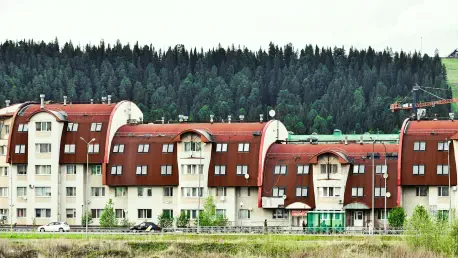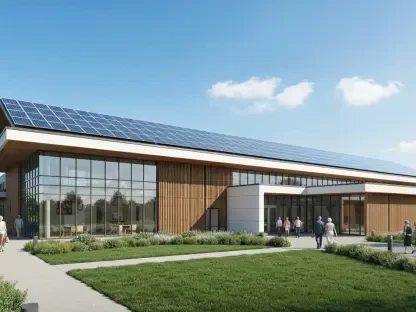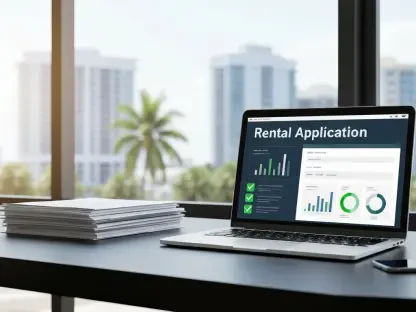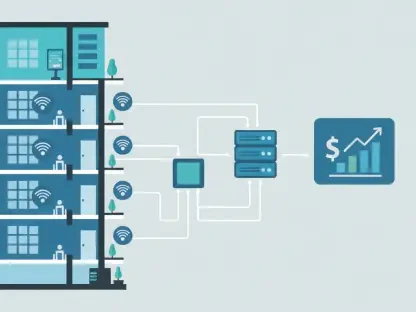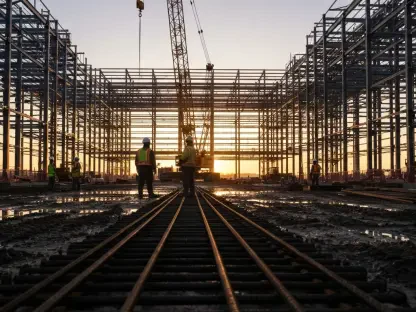In recent years, the global push for sustainability has prompted industries to rethink their methods, seeking eco-friendly alternatives across all sectors. Refrigerants have become a pivotal focus for those involved in the built environment due to their substantial impact on climate change. Though often unnoticed because they are invisible and odorless, refrigerants play a crucial role in HVAC&R systems—essential for regulating indoor climates and preserving perishable goods. Traditional refrigerants, however, have been associated with high greenhouse gas emissions and depletion of the ozone layer. To address these concerns, the Green Building Council of Australia (GBCA), in collaboration with the Australian Institute of Refrigeration, Air Conditioning and Heating (AIRAH), has initiated discussions aiming to revolutionize how developers and stakeholders approach refrigerant choices. These cooperative efforts emphasize the necessity of recognizing refrigerants’ environmental impact and promoting greener alternatives, which are integral to advancing sustainable industry practices.
The Environmental Impact of Refrigerants
Refrigerants play an essential role in the efficiency of HVAC&R systems, yet their contribution to environmental challenges is profound. Historically, substances like chlorofluorocarbons (CFCs) and hydrofluorocarbons (HFCs) were chosen for their performance traits but posed a threat by affecting climate change and the ozone layer. As awareness grows over refrigerants’ environmental toll, there’s a shift toward identifying better alternatives that can maintain system efficiency without ecological harm. The built environment increasingly recognizes the necessity to move beyond synthetic refrigerants, focusing on natural options such as hydrocarbons, ammonia, and CO2, which offer minimized climate impact without sacrificing performance. In parallel, leading regions like Europe are tightening regulations around fluorinated gases, spurring an international movement to reconsider refrigerant choices. Educating property stakeholders is vital, as their decisions hold the power to either mitigate or exacerbate global warming impacts, making environmentally-responsible refrigerant selection crucial for future-proofing buildings.
Strategies for Effective Refrigerant Decision-Making
The complexity surrounding refrigerant choice presents a considerable challenge for developers, owners, and consultants who must navigate technical, environmental, and regulatory landscapes. Simplifying this process begins by demystifying the technical terminology and understanding the incentives driving better refrigerant decisions. Tools like the Green Star rating system are instrumental, encouraging environmentally-friendly choices by aligning building designs with greater sustainability ratings. Despite credits for refrigerants not being highly sought after, their importance continues to grow as building regulations evolve to include mandatory disclosures of greenhouse gas emissions, encompassing direct and indirect refrigerant impacts. By integrating humor and accessible narratives, initiatives like those led by GBCA and AIRAH manage to capture audience attention, fostering deeper engagement with nuanced refrigerant topics. These efforts focus on equipping stakeholders with the ability to ask pertinent questions to suppliers, effectively evaluate refrigerant risks, and leverage industry levers to implement meaningful change within their projects.
Exploring the Evolving Refrigerant Landscape
The transition from fluorinated to natural refrigerants is marked by opportunities and challenges, with environmental considerations leading the charge in search of sustainable options. Past transitions offered more clarity, yet the path forward remains less defined, necessitating continued dialogue and innovation to identify optimal refrigerant solutions. Consideration of hydrofluoroolefin (HFO) refrigerants introduced additional complexity due to their associated environmental concerns, urging stakeholders to probe beyond surface-level benefits. As building electrification gains momentum and gas-powered appliances phase out, direct fossil fuel emissions may decrease, but the focus on refrigerant emissions becomes more pronounced. Recognizing refrigerants’ impact as the second-largest emissions source in the built environment, stakeholders aim for transparency in emissions reporting and strategic planning for HVAC system updates. It is crucial for developers and building owners to ensure new constructions accommodate future refrigerant advancements, emphasizing adaptability and ecological responsibility in design practices.
Looking Ahead: Future-Proofing Building Sustainability
In recent years, the global push for sustainability has challenged industries to evaluate their practices, seeking greener alternatives across sectors. For the built environment, refrigerants are emerging as a focus area due to their significant impact on climate change. Despite their invisible and odorless nature, refrigerants are critical to the heating, ventilation, air conditioning, and refrigeration (HVAC&R) systems, often used in buildings to control indoor climates and preserve perishable products. Traditional refrigerants have been linked to high greenhouse gas emissions and ozone depletion. The Green Building Council of Australia (GBCA), in collaboration with the Australian Institute of Refrigeration, Air Conditioning and Heating (AIRAH), has initiated discussions aiming to revolutionize how developers and stakeholders approach refrigerant choices. These collaborations underscore the importance of understanding refrigerants’ environmental footprint and incentivizing eco-friendly alternatives, which are increasingly vital to sustainable industry practices.
